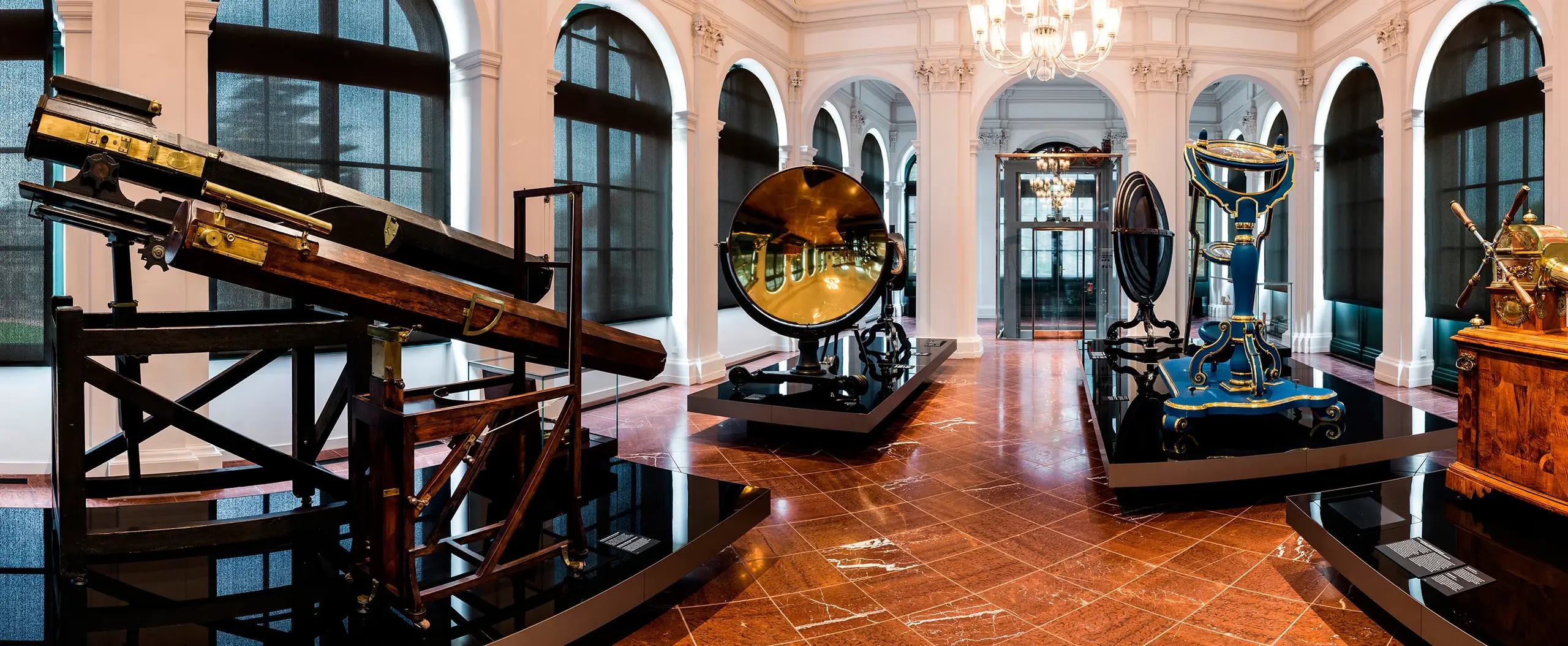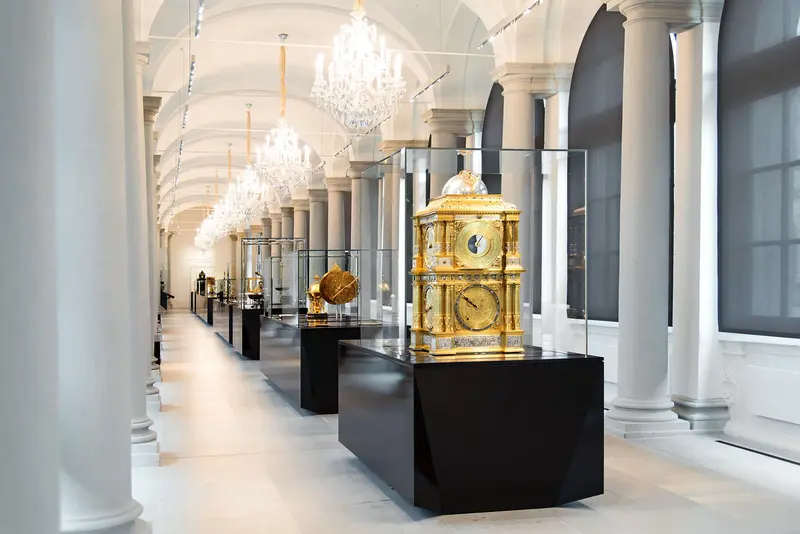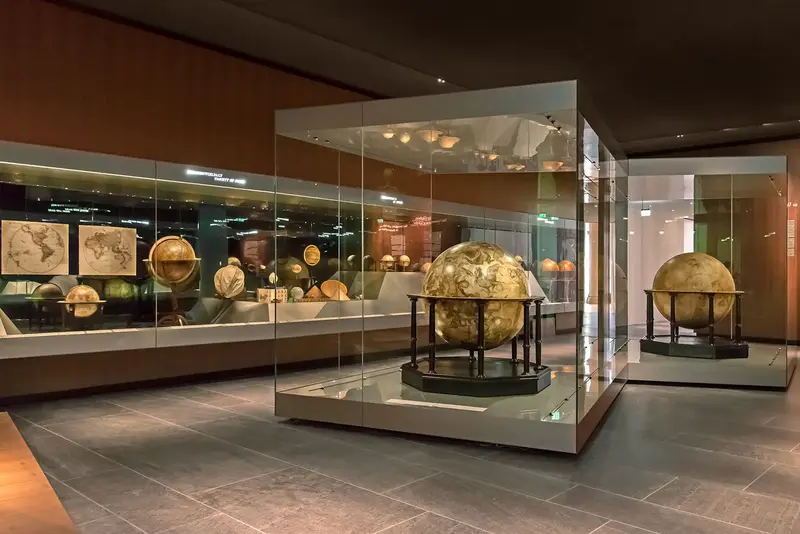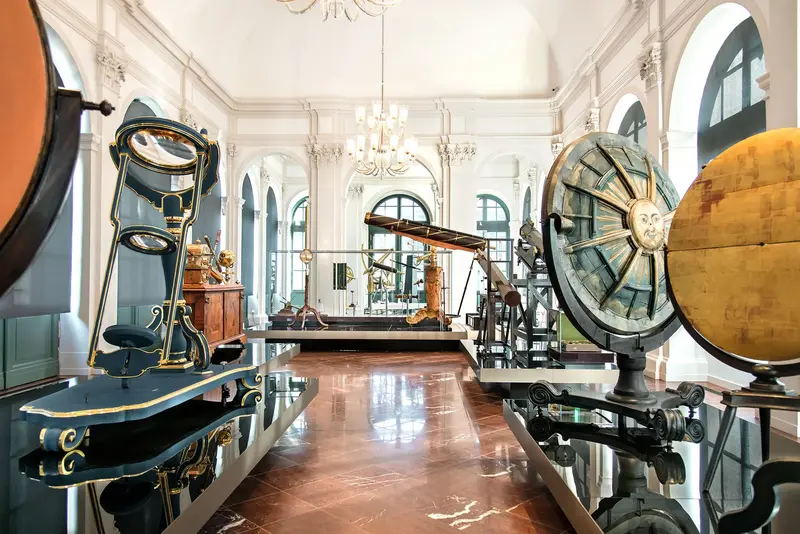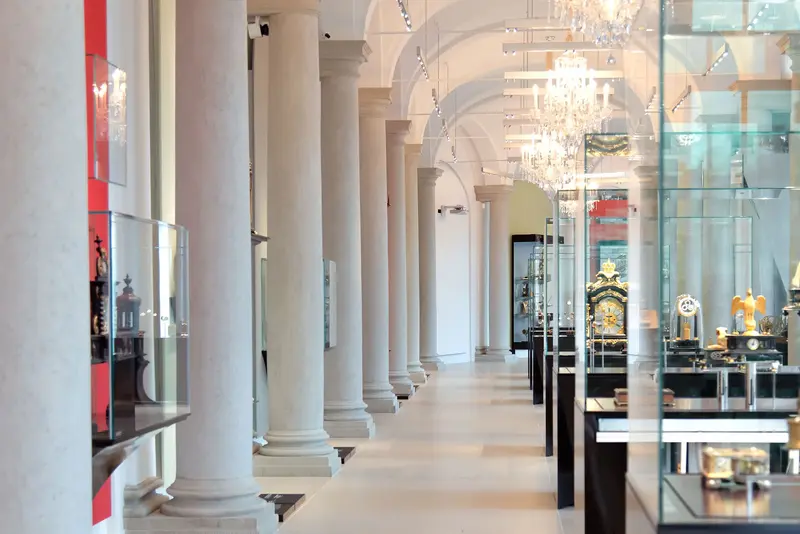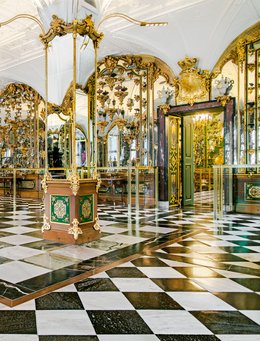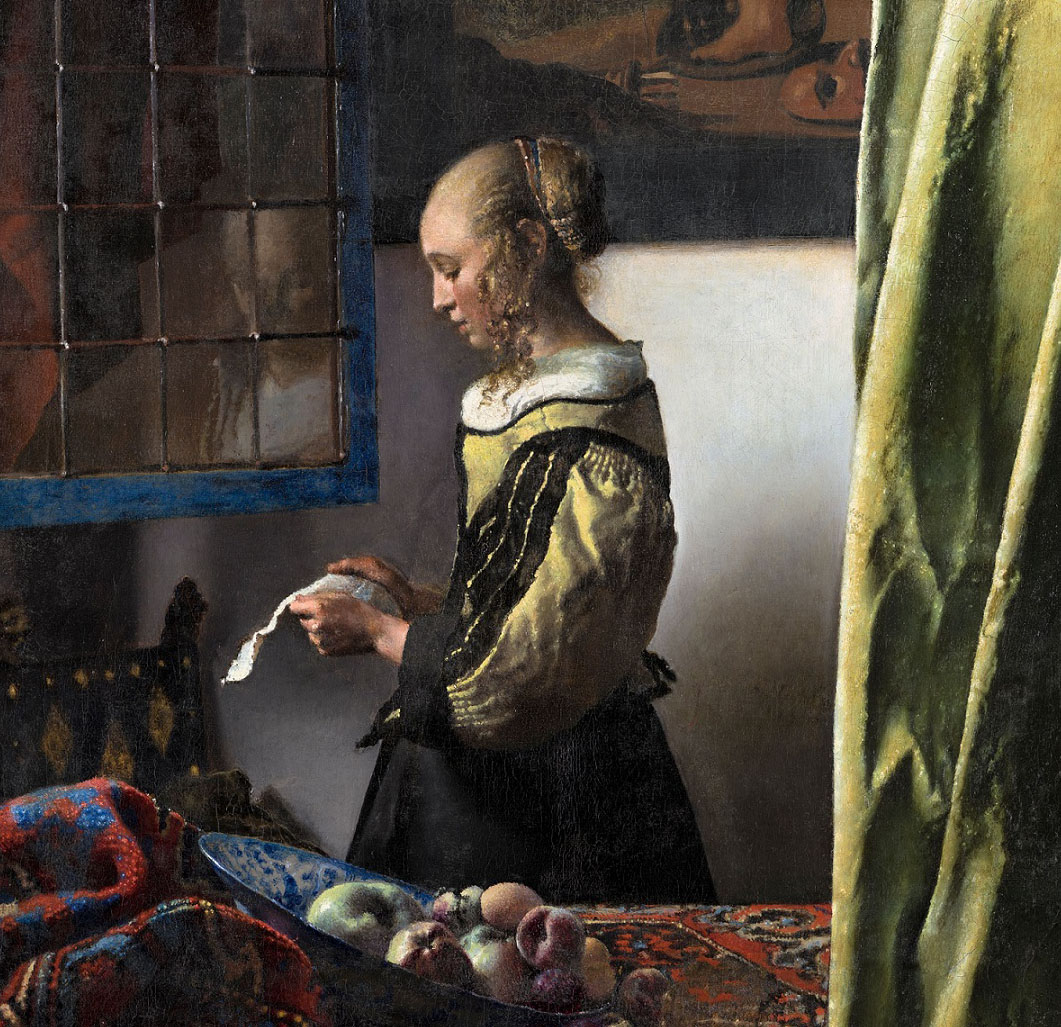The Cosmos of the Prince
The Langgalerie, which extends from the Kronentor to the central pavilion, now houses the display on mechanical marvels and mathematical instruments from around 1600. This part of the exhibition reveals how the collection originated in the 16th-century Kunstkammer, or ‘chamber of the arts,’ of the Electors of Saxony, which was housed within the Palace at their court seat in Dresden. It explores the Electors’ intensive engagement with questions relating to measurement, surveying, and astronomy, and their enthusiasm for elaborate mechanical devices.
